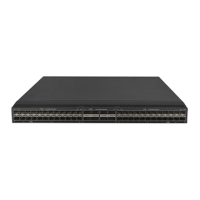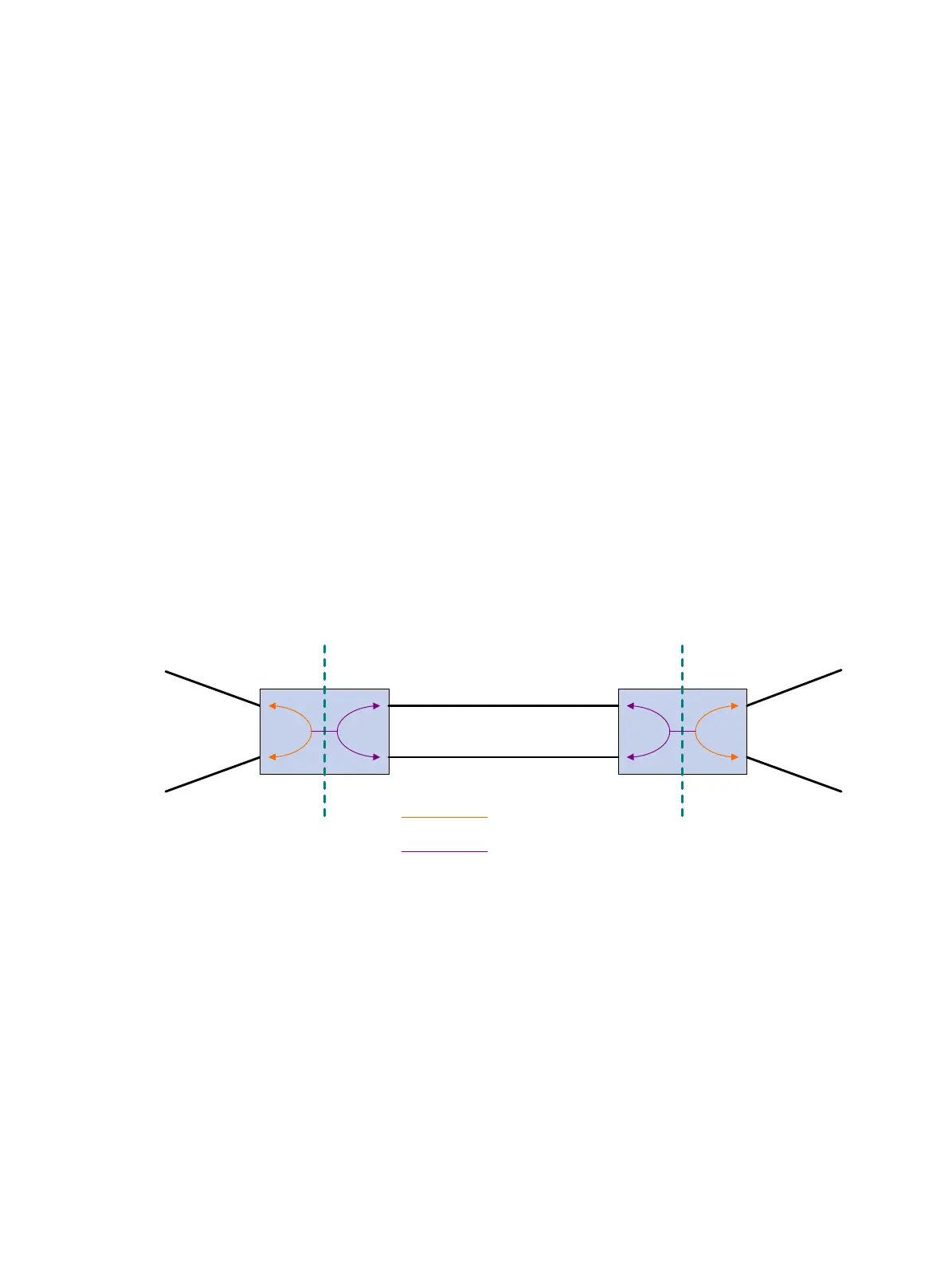2
• LLDP.
• MVRP.
• PAgP.
• PVST.
• STP (including STP, RSTP, and MSTP).
• UDLD.
• VTP.
L2PT operating mechanism
As shown in Figure 2, L2PT operates as follows:
• When a port of PE 1 receives a Layer 2 protocol packet from the customer network in a VLAN,
it performs the following operations:
{ Multicasts the packet out of all customer-facing ports in the VLAN except the receiving port.
{ Encapsulates the packet with a specified destination multicast address, and multicasts it
out of all ISP-facing ports in the VLAN. The encapsulated packet is called the BPDU
tunneled packet.
• When a port of PE 2 in the VLAN receives the tunneled packet from the service provider
network, it performs the following operations:
{ Multicasts the packet out of all ISP-facing ports in the VLAN except the receiving port.
{ Decapsulates the packet and multicasts the decapsulated packet out of all customer-facing
ports in the VLAN.
Figure 2 L2PT operating mechanism
For example, as shown in Figure 3, PE 1 receives an STP packet (BPDU) from network 1 to
network 2. CEs are the edge devices on the customer network, and PEs are the edge devices on
the service provider network. L2PT processes the packet as follows:
1. PE 1 performs the following operations:
a. Encapsulates the packet with a specified destination multicast MAC address
(010f-e200-0003 by default).
b. Sends the tunneled packet out of all ISP-facing ports in the packet's VLAN.
2. Upon receiving the tunneled packet, PE 2 decapsulates the packet and sends the BPDU to CE
2.
Through L2PT, both the ISP network and Customer A's network can perform independent spanning
tree calculations.
PE 1
Service provider network
PE 2
Customer
network
Customer
network
Layer 2 protocol packets
from customer networks
Tunneled packets

